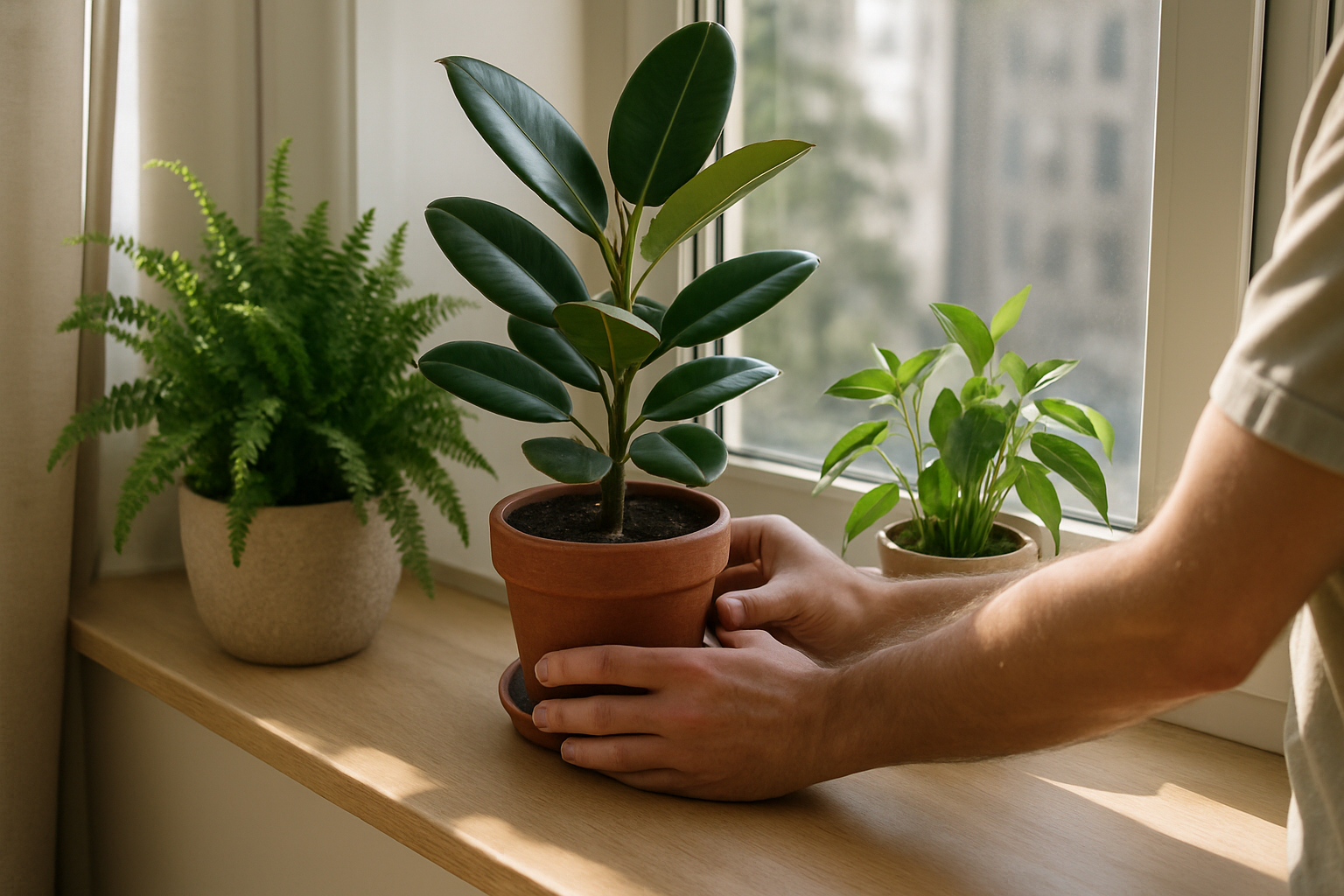Adding plants to your apartment not only makes the space more beautiful and inviting — it also improves air quality, reduces stress, and brings life even to the smallest environments. However, many people don’t realize that where you place your plants can determine whether they thrive or slowly decline.
Among all plant care factors, light is one of the most important. Watering correctly or using the ideal soil won’t be enough if the plant doesn’t receive the right amount of light. Positioning them near the correct windows is essential for their long-term health.
In this article, you’ll learn how to understand indoor light, recognize your plants’ lighting needs, and strategically position them to ensure they grow strong and healthy.
Why Natural Light Is Essential for Plants
Light is the energy source for photosynthesis, the process through which plants produce food and energy to grow. Without enough light, even the most well-watered and well-fed plant will eventually suffer.
But it’s not just about having “some light.” Each plant has specific lighting needs:
- Some love direct sunlight, with intense exposure for several hours.
- Others prefer indirect light, softer and filtered through curtains or nearby walls.
- A few can adapt to low-light conditions, ideal for shadier corners.
Understanding these differences is key to matching your plants with the natural conditions in your apartment.
Types of Indoor Light
To correctly position your plants near windows, it’s important to identify the main types of indoor light:
1. Direct sunlight
When sunlight hits the plant without obstructions. This usually occurs in south-facing windows (Northern Hemisphere) with no curtains.
📌 Ideal for: cacti, succulents, rosemary, basil.
2. Bright, indirect light
The plant is near a window but not directly in the path of sunlight. This is the most common lighting in apartments.
📌 Ideal for: pothos, monstera, peace lilies, rubber plants.
3. Filtered or diffused light
Sunlight passes through sheer curtains or frosted windows. This mimics the light of tropical forests.
📌 Ideal for: ferns, calatheas, orchids.
4. Low light (bright shade)
The room is lit but receives little to no direct sunlight. Still, some species can adapt well.
📌 Ideal for: snake plants, ZZ plants, cast iron plants.
How Window Orientation Affects Plant Growth
The orientation of your windows directly influences the intensity and duration of light your plants receive:
- South-facing (Northern Hemisphere): Get bright, consistent light all day.
📌 Best for sun-loving plants. - East-facing: Receive gentle morning sunlight, perfect for many tropical plants.
📌 A great balance between light and softness. - West-facing: Receive intense afternoon light, which can burn delicate plants.
📌 Good for succulents and herbs. - North-facing (Northern Hemisphere): Provide the lowest amount of direct sunlight.
📌 Suitable for shade-tolerant species.
How to Position Plants Near Windows (With Practical Tips)
Placing your plants correctly can make all the difference. Here are some practical tips:
1. Use the windowsill for sun-loving plants
Small plants like succulents and cacti do well in direct sun. Rotate the pots every few days to promote even growth.
2. Place sensitive plants behind sheer curtains
For species that burn easily, like ferns and orchids, filtered light is essential. Lightweight curtains help diffuse the intensity.
3. Rotate pots weekly
Plants naturally grow toward the light. Rotating them prevents lopsided growth and keeps them balanced.
4. Use shelves or vertical plant stands
If you have many plants, maximize your space with tiered stands or wall-mounted shelves near the window.
5. Observe your plant’s behavior
Drooping, yellowing, or leaning toward the window? These are signs that your plant may be getting too much or too little light.
What to Do If Your Apartment Has Limited Natural Light
Not every home has large, sun-drenched windows — and that’s okay. You can still grow beautiful plants with a few smart strategies:
- Use grow lights: LED grow bulbs mimic sunlight and are easy to set up.
- Add mirrors nearby: Mirrors reflect and amplify natural light.
- Avoid heavy curtains: Use light fabrics to let sunlight in.
- Choose adaptable plants: Such as pothos, ZZ plants, philodendrons, and peace lilies.
Keep Windows Clean
It may seem like a small detail, but dirty windows can reduce incoming light by up to 40%. Clean both the inside and outside of your windows regularly to ensure your plants receive as much light as possible.
Monitor and Adjust as Needed
Every apartment has its quirks — neighboring buildings, seasonal changes, or furniture placement can all affect how much light your plants get. Stay observant and don’t be afraid to move plants around as needed.
For example, in winter, the sun’s angle changes, and you may need to relocate your plants temporarily. A few small adjustments can keep them thriving year-round.
Final Thoughts: Let the Light In
Finding the best window for your plant is more than just checking for sunlight — it’s about creating a microclimate where your plant can truly thrive. With patience and a bit of trial and error, you’ll start to recognize each plant’s unique needs.
Soon, your apartment will be more than just green — it will be a living, vibrant space full of natural energy and beauty. Let the light in, and watch your indoor garden (and your well-being) flourish.
